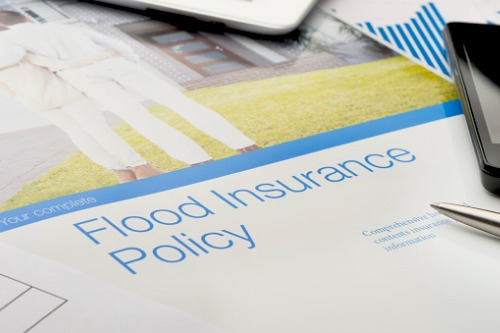

Insurance and environmental experts believe that more needs to be done in order to counter the rising risk of flooding across Canada.
According to a study published in June by researchers at Environment and Climate Change Canada, climate change has made rainfall more severe in recent years, and has also made storms with extreme rainfall more frequent.
One of the methods provincial governments have used to address the rising risk of flooding is by offering to buy out properties from homeowners living in high flood risk areas.
“Taxpayers are starting to see what’s going on here and they simply aren’t willing to continue paying to rebuild in high-risk flood areas, so the solution is you try to give people the option of leaving or relocating to a safer area,” said University of Waterloo School of Environment, Enterprise and Development associate professor Jason Thistlethwaite.
Thistlethwaite told CBC Radio that homeowners will be seeing more buyout programs in the future.
“These strategies are by far the best forms of risk mitigation because you take exposure of people and property to the water and you bring it to zero by moving them to a safer location,” the professor explained.
However, not every homeowner is open to the idea of selling their property.
“I think there’s an incredible amount of backlash because people have very strong ties to where we live,” commented University of Delaware Biden School of Public Policy and Administration assistant professor A.R. Siders.
Siders noted that people want personal control, and that is why some are afraid the government will force them out – instead of asking them if they would like to leave while offering financial aid.
“That’s hard to convey in a nuanced way, especially ... right after disaster, when people are already emotionally overwhelmed,” the assistant professor added.
To make matters worse, not every Canadian is aware that they are living in high-risk flood areas.
“We have asked Canadians this question and found that only 6% were correctly able to identify that they were, in fact, living in a high-risk flood area,” said Thistlethwaite, who also mentioned that Canada does not have widely publicly available maps designed for homeowners. Current flood maps do exist, but are typically old and have been drawn for engineers, not homeowners.
Thistlethwaite also suggested that insurance is another issue. Prior to 2015, insurance only covered basic flooding coming in through a stormwater system (sewer backup), but insurance companies later offered overland flood insurance, which covers damage caused by water coming from sources such as overflowing rivers.
As helpful as overland flood insurance is, its availability and price can stop homeowners from purchasing it, Thistlethwaite said.
“This coverage is now available in Canada, but it is not available to those who need it most, because in our high-risk areas, it’s either companies aren’t willing to sell it or it’s cost-prohibitive,” he explained.
The Insurance Bureau of Canada (IBC) believes that the government needs to take on a bigger role when it comes to flood risk mitigation.
“You may buy a home based on municipal information, thinking it’s low-risk, but then find out that your bank or insurer views it as high-risk, which obviously would make you unhappy,” IBC vice-president of federal affairs Craig Stewart told CBC Radio.
“So, it’s up to us, frankly, in the private sector, and with governments, to get our act together and start sharing information much more actively than we’re doing right now,” he said.
